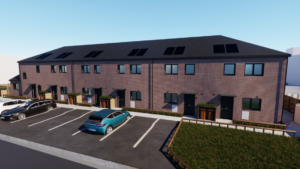Can homes save the high street?

Every week there is more gloom for the high street, whether the end of retailers such as Maplins or Toys R Us, the decline of department stores or the retreat of restaurants. And another expert produces a report.
The prime minister thinks that turning shops into homes may be an answer, taking away retail floor space and producing cheap homes. Regardless of whether it is possible to create a modern home from the ground floor of a 19th century shop building, built to the back of the pavement with no amenity space and little rear access, is this really a good way to put new life into commercial centres?
One lesson we need to learn from the ‘beast from the east’ is that our housing stock is ill-equipped for extremes of weather. Creating more poorly insulated, hard to heat or ventilate homes is perhaps not the most thought through policy idea.
Turning to the question of bringing more homes and therefore footfall to the high street. We have been trying to do this for decades, I know; I have worked on many projects over the years. Overall the accommodation over shops, unless modern and purpose designed, rarely provides good housing. There is a conflict between increasing the residential population and creating a night-time economy, another option for high streets.
Perhaps it is worth looking again at the high street and thinking how else the spaces could be used. The first thing I want to suggest is that we stop thinking about the use of a space as being for a single fixed purpose. From being a nation of shopkeepers in the famous insult we are becoming a nation of small businesses. Low cost, easily accessible space that can be used for start-ups or short-term retail has a role to play in supporting enterprise and keeping activity in the high street. Rather than use the planning process to protect what is no longer needed use it to encourage creative thought about what redundant spaces could be.
The next element could be trying to get jobs into high streets, can the spaces be reconfigured to provide offices and workshops? This approach would generate daytime spend from sandwiches to dry cleaning, key cutting and cobbling. This may involve assembling properties to create a suitable development area. Getting employment uses where there is public transport and support services can create a self-sustaining mix of companies trading with each other. The alternative is another sterile business park accessible only by cars and surrounded by a tarmac desert.
And a final thought. Apart from new schemes in viable retail parades do we really need more ‘active frontages’ in developments?















